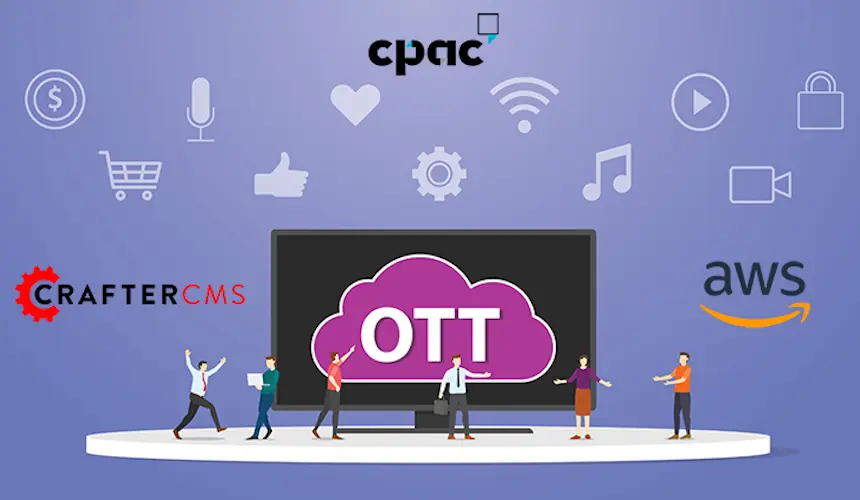8 Innovative Web Design Elements That Drive Revenue

Amanda Lee
Website design is evolving so quickly that if your site is more than two years old, it’s probably time for an update. Keeping up with these rapidly changing internet technologies can be tough, but with 68% of all Americans owning smartphones, systems like mobile marketing are a requirement for success on the web. Your consumers demand a modern design optimized for mobile, and the future of your company depends on it. The following are a few other elements required for modern web design worthy of your consideration this year.
1. CONTENT MANAGEMENT SYSTEM (CMS)
Although CMSs have been around for over two decade, they are still the most popular and most versatile way to allow for easy updates to your website content. With a CMS, no technical coding skills are required because many systems provide the ability to easily drag and drop elements to easily create basic design changes.
There are many CMS platforms but CrafterCMS is the difference your company has been seeking. CrafterCMS offers an open source, agile, and modern Java-based alternative to closed, proprietary WCM solutions from Oracle, Adobe, HP, OpenText, Documentum, and others. And CrafterCMS provides a much higher performance solution when compared to other open source solutions that are tightly coupled and based on SQL/NoSQL databases or JCR (e.g. Apache Jackrabbit) repositories. Crafter leverages best of breed free and open source software, including Git, the Spring Framework, Freemarker, Bootstrap, React, and Elasticsearch.
Keep in mind when considering a CMS platform that site speed is crucial for search and your web design should be properly optimized for it. A slow website will turn your current customers and potential customers away. Because of the importance of site load times on smartphones and tablets, having a responsive design is a must.
2. RESPONSIVE DESIGN
Making a responsive website is essential. Mobile commerce is now 30% of all e-commerce with over $400 billion in revenue generated each year. Because of this, it’s safe to say that over half of your website traffic comes from mobile devices. Keeping your site load times at a minimum is as important as ever. If your site loads too slowly and customers have a difficult time viewing your site – especially on their smartphone or tablet – they may move on to a competitor’s site.
3. BUSINESS BLOG
A business blog is a great way for you to present relevant content to your audience while giving them a reason to continually come back to your site. It educates your customers and prospects with an opportunity to build trust and a relationship with your brand and business.
Because the blog content needs to be fresh and relevant, it’s smart to begin blogging when you have the time to devote to the long-term commitment. If now is not the right time to start, don’t wait too long. Your competition could be blogging and over time this will work against you while you wait, they will be gaining valuable market share, referrals, inbound links, and of course, customers.
4. SOCIAL MEDIA SHARING
Promoting your business via social media is a given. And, if you have a business blog, there’s no better way to reach your target audience than by promoting it on social media like Twitter, Facebook, and LinkedIn. In addition to promoting your content, social media is a great place for your customers and site visitors to connect and share your information.
Trust is important when promoting on social media, so be sure to take time to share relevant information to targeted audiences who will be interested and most likely to share. Avoid spam posts, they will only annoying people.
5. CONTENT PERSONALIZATION
Creating personalized content for your buyer personas will help increase conversions for your website. One great example of a site that shows just how content personalization works is overstock.com. Once you’ve created an account on the site, you will notice products you have shown interest in are recorded. By watching your behavior, the site is able to suggest and promote similar products.
6. CONVERSION PROCESS
The conversion process begins on the landing page. The sole purpose of a landing page is to convert visitors into leads. Your landing page can promote offers, be an opportunity to get site visitor information, offer whitepapers, ebooks, guides and other information.
Be wary of where you try to convert your website visitors into leads. Doing so at too many spots in the buyer’s journey can actually turn them away as they many find it obnoxious to be required to include contact information in order to simply get access to your website’s content.
You can work around this by promoting free offers that require no forms. By giving your visitors an option to see your site and become educated about your business while being exposed to your ideas, they can make the decision to subscribe further.
7. EMAIL MARKETING & NURTURING
After you have converted leads, you will want to offer additional content that they might find useful. By doing this, you are essentially hooking them and nurturing them throughout their buying journey. Email marketing is the best way to stay in touch and provide content that is useful to them. Again, you do not want to spam them or over email. Keeping their trust and building that relationship is key. Segmenting your leads by persona type and by stage in the buyer’s experience can help make your email marketing efforts more effective.
8. CONTACTS DATABASE AND CRM
For the best result in both sales and marketing, integrate your website with a contacts database. You will be able to store contact information for all leads and customers. You will also be able to store important information about how your contacts are interacting with your site pages, email marketing, and offers. This invaluable information can be used to create offers to your customers and leads at the most opportune times.
Integrating your contacts database with your CRM (Customer Relationship Management) platform allows your sales team to gain insights to each lead and where they are in their buying experience.
TAKEAWAYS
Websites are constantly evolving and are becoming more complex every day. Technology empowers customers in every part of the buying experience while also empowering businesses to provide better and unique user experiences. By embracing it, you give your company a better advantage over the competition and stay current with the latest trends.
Related Posts

How Should You Structure a Blog Post So AI Models Actually Cite It?

Amanda Jones

Websites Are Dead?

Mike Vertal

No-Code Experience Building for Marketers & Designers

Amanda Lee

The Future of Web Experiences: From Browsing and Searching to Conversational AI

Mike Vertal
Related Resources
-

CrafterCMS at eBay: The Universal Content Platform for eBay.com
Webcast
-

Personalized Digital Experiences for a Cruise Liner
Webcast
-

Modernizing Video Delivery and Content Management at CPAC, A Canadian Nationwide Broadcaster
Webcast
-

How to Migrate from Contentful to CrafterCMS
Tutorial
-

Partner Solution: Live Video and Conferencing for Digital Events
Webcast





